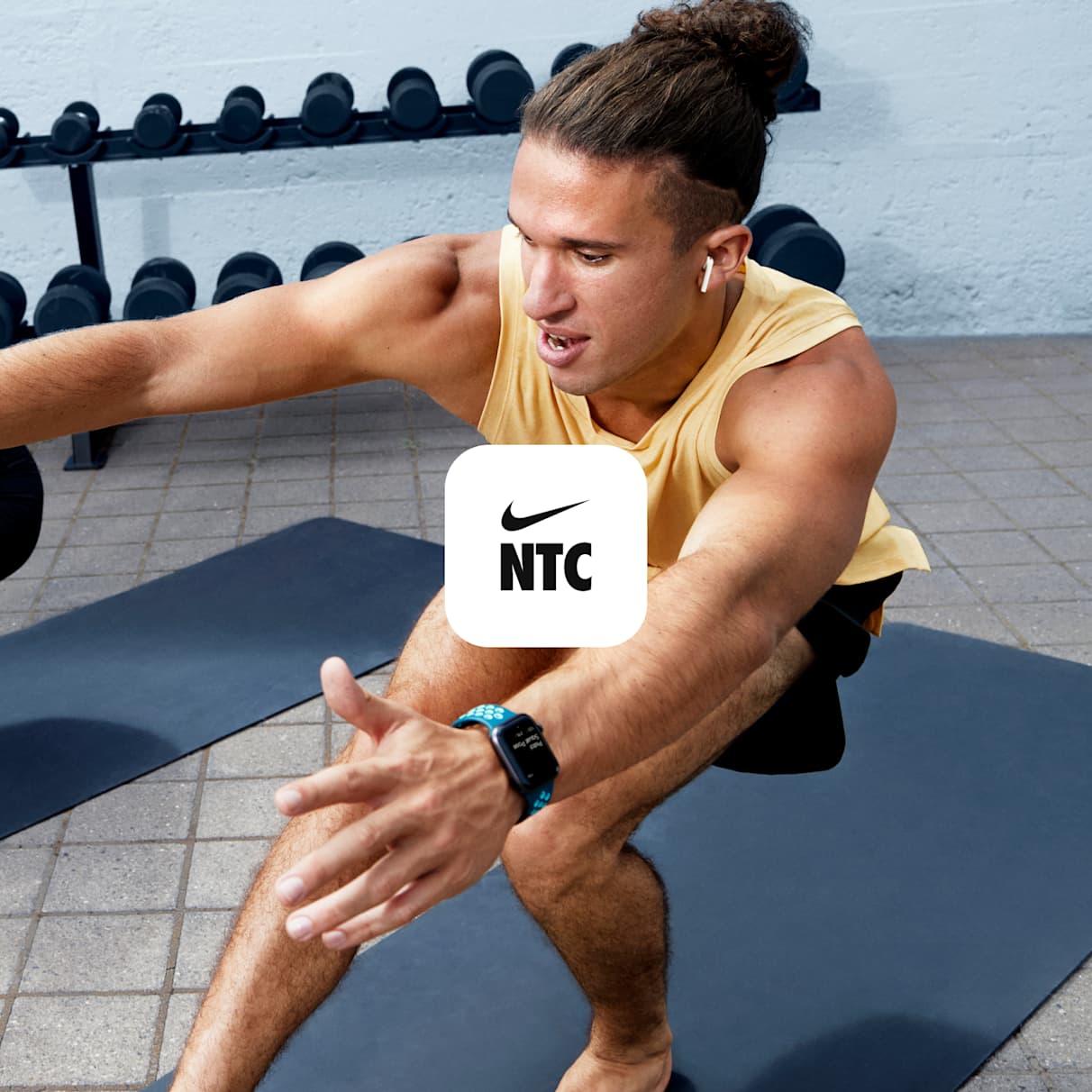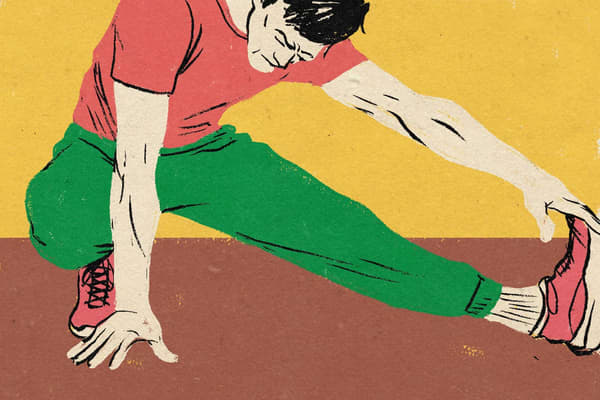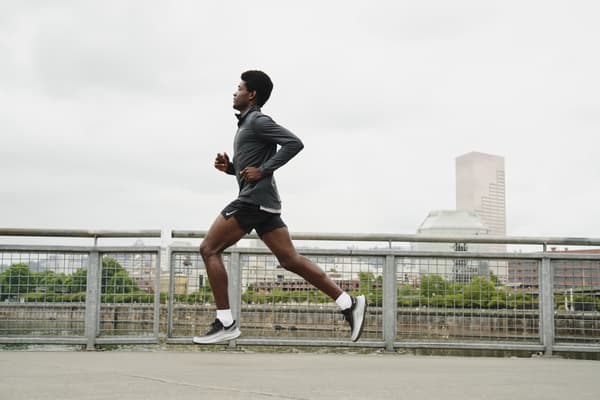Should you work out if you're ill?
Health & wellness
Exercising when you're not feeling well can be risky—here's what experts want you to know.

There are a couple of tried-and-tested methods to speed up your recovery when you're under the weather, the most common include getting ample rest and drinking lots of fluids. But exercise? Not necessarily. In fact, some workouts may even delay your recovery from illness.
That said, there are some scenarios where it may be OK to work out when you're not feeling great. But even then, you'll want to tread carefully. Here, experts explain if (and when) it's safe to work out while ill and how to return to exercise once you're feeling better. Plus, find out more about how physical activity affects your immune system.
Is it safe to work out when you're ill?
"The decision to exercise when you're poorly or recovering from illness depends on the type of illness and the severity of symptoms", says Anjali Bharati, DO, an emergency medicine doctor at Lenox Health Greenwich Village in New York City.
In general, it's safe—and maybe even beneficial—to exercise if your symptoms are above the neck. "If you have upper-respiratory symptoms like a mild cough or runny nose, going for a walk or light jog may actually make you feel better. It can clear your sinuses and relieve some nasal congestion", says Bharati.
But if you've been diagnosed with COVID-19 or if your symptoms involve fever, body aches, shortness of breath, or weakness or dizziness, hit the pause button on working out to give your body time to recover.
"One of the biggest concerns with exercising while you're severely ill is the risks it can pose to your heart", says Dennis Cardone, DO, a sports medicine specialist and chief of the division of primary care sports medicine at NYU Langone Health. Experts believe that exercising while ill—especially if you have COVID-19—can increase your risk of developing myocarditis, a viral infection of the heart muscle.
According to the Mayo Clinic, myocarditis can reduce your heart's ability to pump blood. This causes rapid or irregular heart rhythms, chest pain, shortness of breath and fatigue. In severe cases, myocarditis can cause sudden cardiac arrest, even in young athletes, notes the Blanchard Valley Health System. Think about it: your body has enough to handle when you're ill. Adding exercise on top of those stressors will probably make you feel worse.
When you exercise, your body uses energy, water and electrolytes to fuel your heart, lungs and muscles. But if you're ill, your body is already gobbling up lots of energy, water and electrolytes to fight the infection. "Working out when your body is running low on fuel will only make you more fatigued and dehydrated", Bharati says. This will delay your recovery.
Don't miss This is exactly how much water you should drink every day, according to experts
When is it OK to start exercising again?
You don't have to wait until you feel 100 percent better to work out, but you should wait until at least 90 percent. That means your energy levels are close to normal, your head is feeling clear and you're back on track with your hydration and nutrition. You may also begin to crave exercise again, "So all signs are pointing to 'go'", says Cardone.
However, if you still feel light-headed, achy, fatigued or short of breath, give yourself more time to recover before restarting your workout routine.
How to exercise safely when you're still recovering
If you choose to exercise while recovering, your first order of business is to work out away from the gym—and other people. And if you've been diagnosed with COVID-19, make sure you rest and self-isolate for at least five days before exercising. According to the Centers for Disease Control and Prevention (CDC), you should count day one as the first full day after your symptoms appeared or when you received a positive test result.
Your workout intensity will vary depending on your symptoms and how long it's been since you've exercised. In any event, don't expect to hit the ground running on your first workout back. "It's easy for people to get weaker and deconditioned within a few days of doing nothing and it takes time to get back to the same level", Cardone says.
When you return to exercise, aim for 50 percent of your usual intensity—at the most. "It will depend on how long it's been since you've worked out, but 50 percent is a good general rule", Cardone says.
For example, if you're a runner returning from illness, slash your weekly mileage by half and run at a slower pace. "Consider adding in low-impact cardio options like cycling, rowing or the elliptical that first week or two to gradually progress your impact and intensity", Cardone says. That said, these low-impact activities may not be wise if your only option is to go to the gym and risk exposing other people to your germs.
RELATED: Elliptical, treadmill or running outside—which one is the best?
If your workout of choice involves weightlifting, drop your usual loads by at least 50 percent. "Now is not the time to test how much you can Deadlift", Bharati says. You may also want to cut back on your workout length and frequency.
To get back into working out after being ill, Bharati and Cardone recommend trying these exercises first:
- Walking or light jogging
- Slow yoga
- Light-intensity strength training
- Slow cycling
Meanwhile, they say the worst exercise to do when you're recovering include:
- High-Intensity Interval Training (HIIT)
- Endurance running
- Group fitness classes
- Gym workouts
- Winter activities like skiing
Whatever activity you do, work at an intensity that enables you to hold a conversation comfortably.
Notice how you feel during your workouts. If things go well, increase your intensity by 10–20 percent and see how that feels. Keep adding intensity in increments of 10–20 percent until you're back to your pre-illness level.
If you start feeling light-headed, nauseous, fatigued or achy, stop your workout or lighten your intensity.
Don't forget to hydrate
While you recover from your illness, put extra effort into hydrating, especially if you're planning to work out. "People often start to fall behind with their hydration when they're ill, so it's important to increase your fluid intake", Cardone says.
The easiest way to gauge your hydration level is to keep tabs on the colour of your urine. "It should be a very light yellow or clear. If it's amber or dark yellow, that's a sign that you need to hydrate more", Cardone says.
Is exercise good for the immune system?
Regular moderate-intensity exercise may offer long-term benefits for your immune system. A 2016 study in Medicine and Science in Sports and Exercise found that even low levels of physical activity are associated with a 10 percent lower risk of bacterial infections compared with staying sedentary.
Think of your immune system like your heart and lungs. Exercise challenges your heart and lungs, making them stronger and more efficient over time. The same is true of your immune system.
The short-term effects of exercise on the immune system, on the other hand, are up for debate.
Many experts believe that your immune system is vulnerable for a couple of hours after exercise, especially high-intensity exercise. According to a 2018 review article in Frontiers in Immunology, the thinking is that bouts of intense exercise temporarily decrease the number of antibodies and other immune cells circulating in your blood. This increases your risk of infection.
However, other experts argue that your immune system is more responsive to potential threats immediately following exercise. The idea is, your antibodies and immune cells are getting directed away from your blood, so they can look for damaged or infected body cells in other places, according to the 2016 review.
The bottom line
Ultimately, the long-term benefits of exercise for the immune system outweigh any potential downsides. Unless, of course, you're battling a fever or recovering from a head cold. If you're ill or experiencing residual symptoms like fatigue and body aches, give yourself—and your immune system—a break from exercise.
For some low-impact exercise ideas, make sure you download the Nike Training Club App!
Story written by Lauren Bedosky















